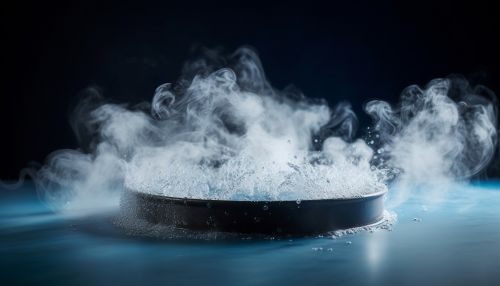Evaporative cooling
Introduction
Evaporative cooling is a natural phenomenon that involves the cooling of air due to the evaporation of water. This process is a fundamental aspect of climate, weather, and thermodynamics. It is also a critical principle used in various technologies, including air conditioning, refrigeration, and data center cooling systems.
Principle of Evaporative Cooling
Evaporative cooling operates on the principle of phase transition. When water molecules gain enough energy to transition from a liquid state to a gaseous state, they absorb this energy from their surroundings, resulting in a cooling effect. The energy required for this phase transition is known as the heat of vaporization. The heat of vaporization is significant, meaning that the evaporation of even a small amount of liquid water can cool an appreciable amount of air.


Natural Occurrences
Evaporative cooling is a critical component of the Earth's climate system. It plays a significant role in the water cycle, where it helps to regulate the Earth's temperature and distribute heat around the globe. In the water cycle, evaporative cooling occurs when the sun's heat causes water from the oceans, lakes, and other bodies of water to evaporate, cooling the surrounding air.
Evaporative cooling also plays a role in human physiology. The human body uses evaporative cooling to maintain a stable internal temperature through the process of perspiration. When the body's temperature rises, the sweat glands produce sweat, which evaporates from the skin's surface, cooling the body.
Applications
Evaporative cooling has numerous practical applications, particularly in the field of cooling technology. These applications can be broadly divided into two categories: direct and indirect evaporative cooling.
Direct Evaporative Cooling
Direct evaporative cooling (DEC) systems, also known as swamp coolers, work by passing hot, dry air over a wet surface. As the water evaporates, it absorbs heat from the air, cooling it. This cooled air is then circulated throughout the space to be cooled. DEC systems are particularly effective in hot, dry climates where the evaporative cooling effect can be maximized.
Indirect Evaporative Cooling
Indirect evaporative cooling (IEC) systems, on the other hand, use a heat exchanger to cool the air without adding humidity. In an IEC system, hot air is passed over a wet surface on one side of a heat exchanger. As the water evaporates, it cools the heat exchanger, which in turn cools the air on the other side. This cooled air can then be circulated throughout the space without increasing the humidity.
Advantages and Disadvantages
Like any technology, evaporative cooling systems have both advantages and disadvantages.
Advantages
Evaporative cooling systems are generally more energy-efficient than traditional air conditioning systems. This is because they use the natural process of evaporation to cool the air, which requires less energy than the mechanical process used in air conditioners. Additionally, because they add humidity to the air, they can improve indoor air quality, particularly in dry climates.
Disadvantages
On the downside, evaporative cooling systems are not as effective in humid climates, where the air's capacity to hold additional moisture is limited. They can also require more maintenance than traditional air conditioning systems, as they need to be regularly filled with water and the pads need to be cleaned or replaced to prevent the growth of mold and bacteria.
Future Developments
As the need for energy-efficient cooling technologies continues to grow, it is likely that the use of evaporative cooling systems will increase. Researchers are currently exploring ways to improve the efficiency and effectiveness of these systems, including the development of advanced materials for use in heat exchangers and the integration of evaporative cooling systems with other cooling technologies.
